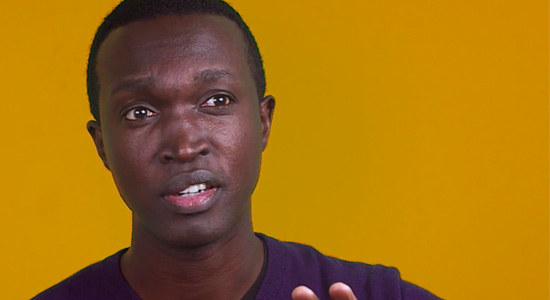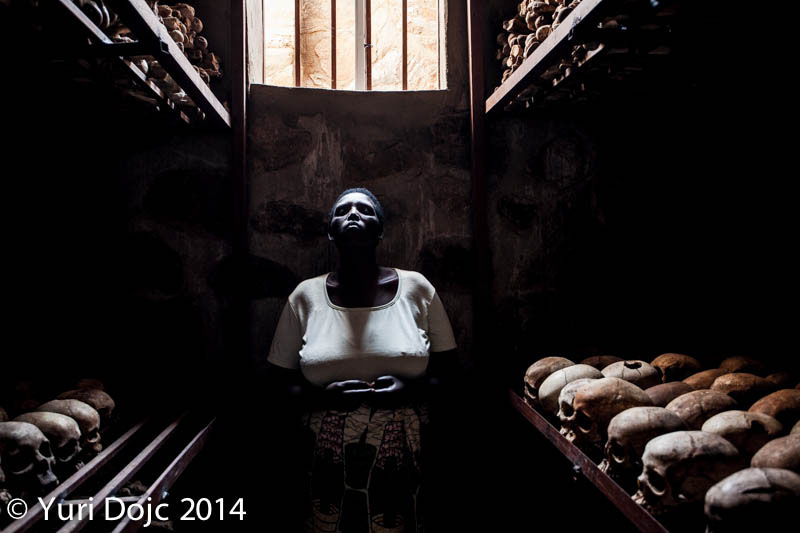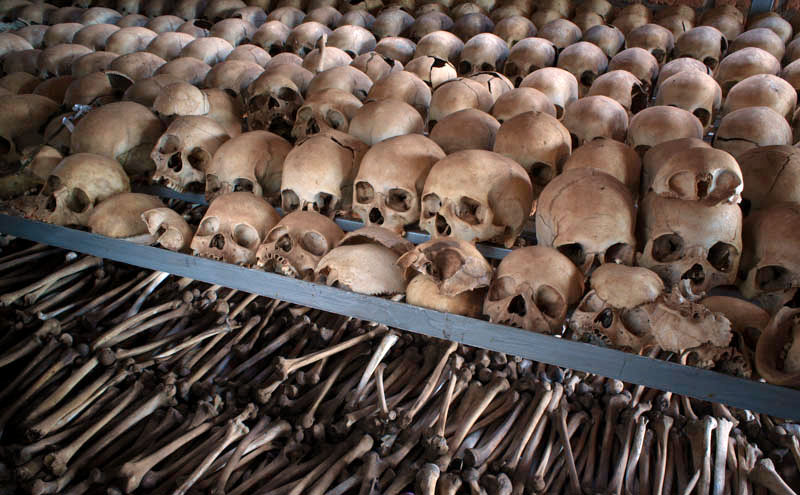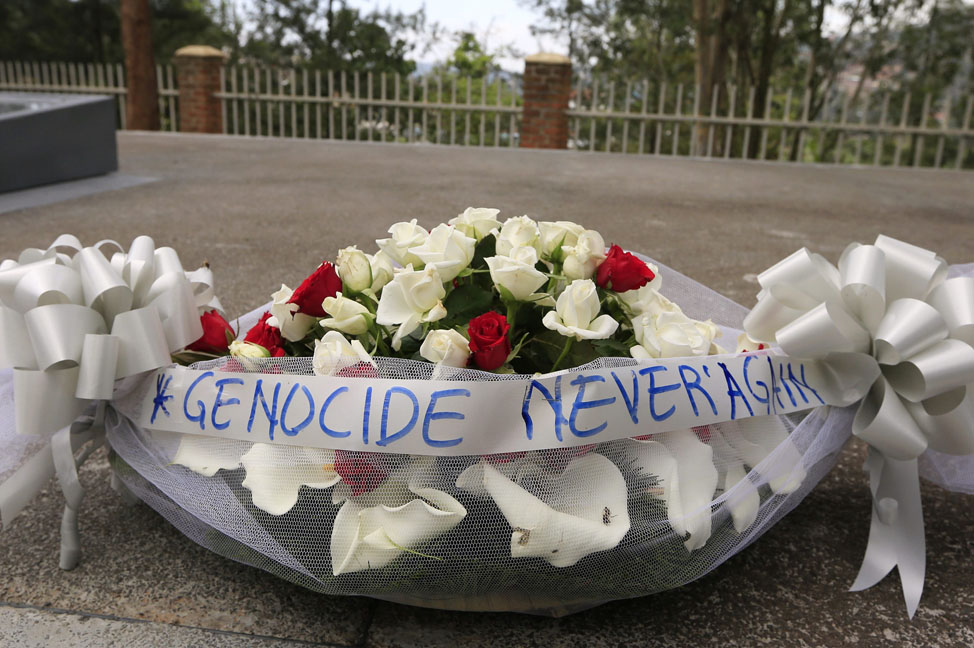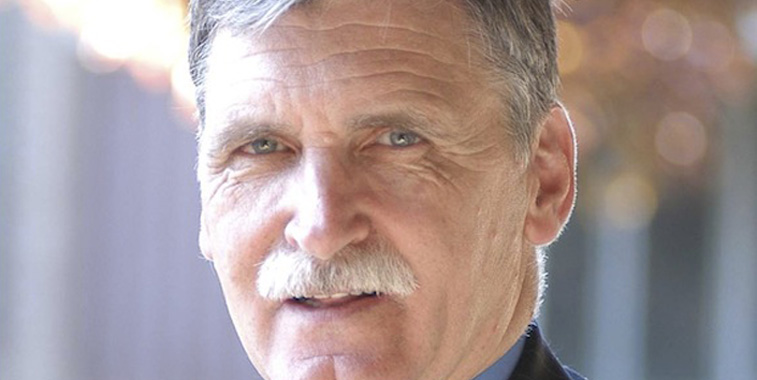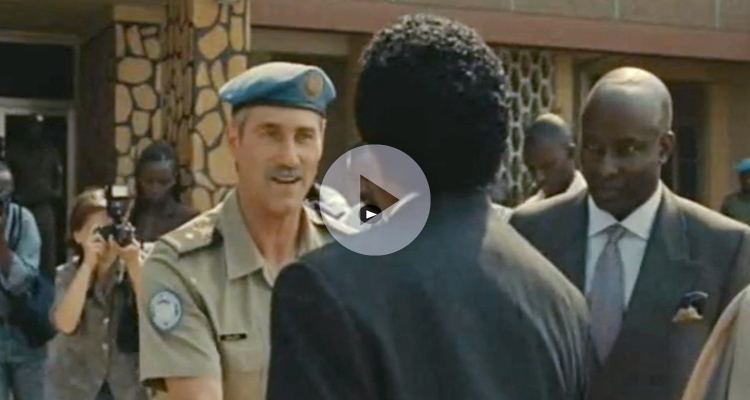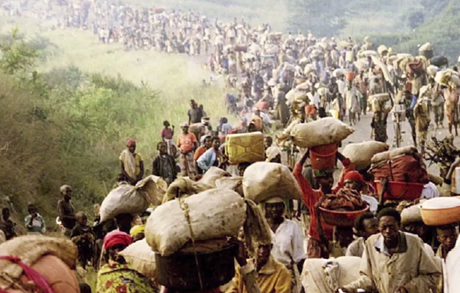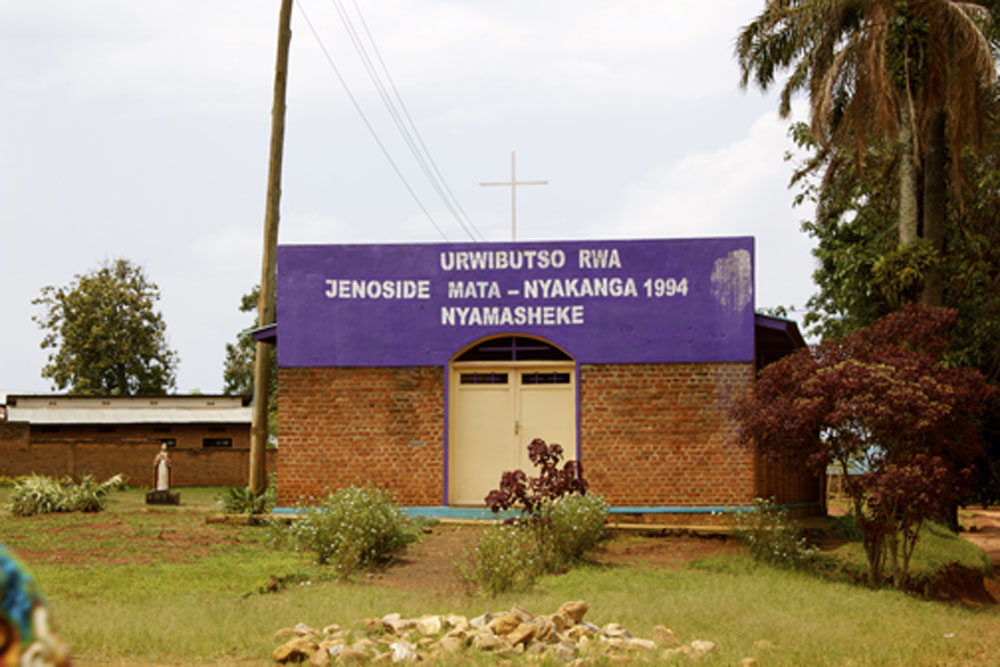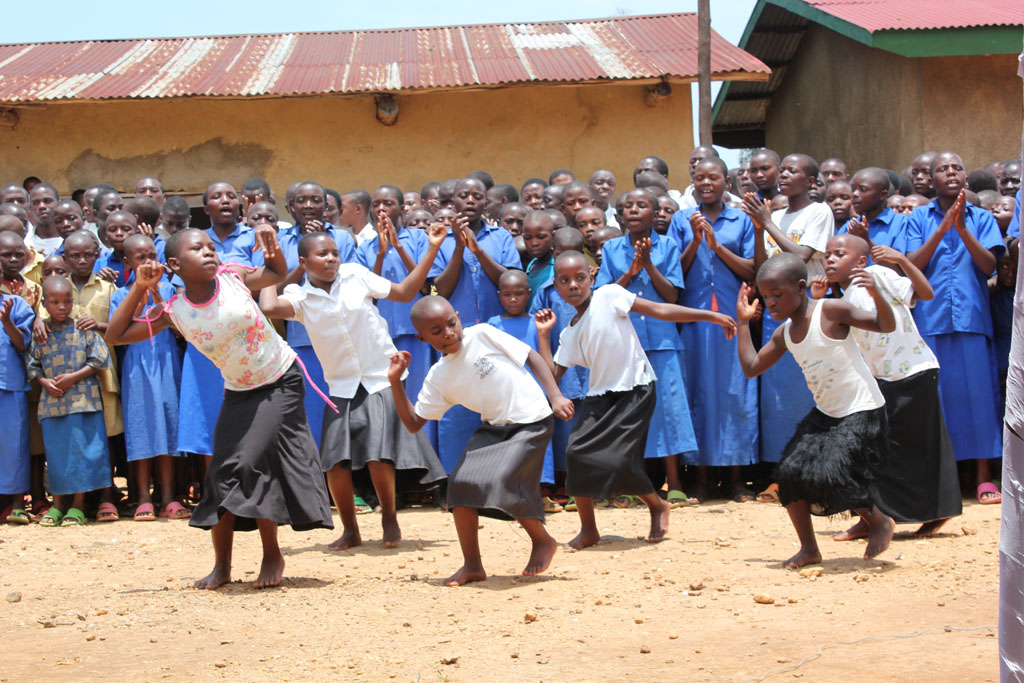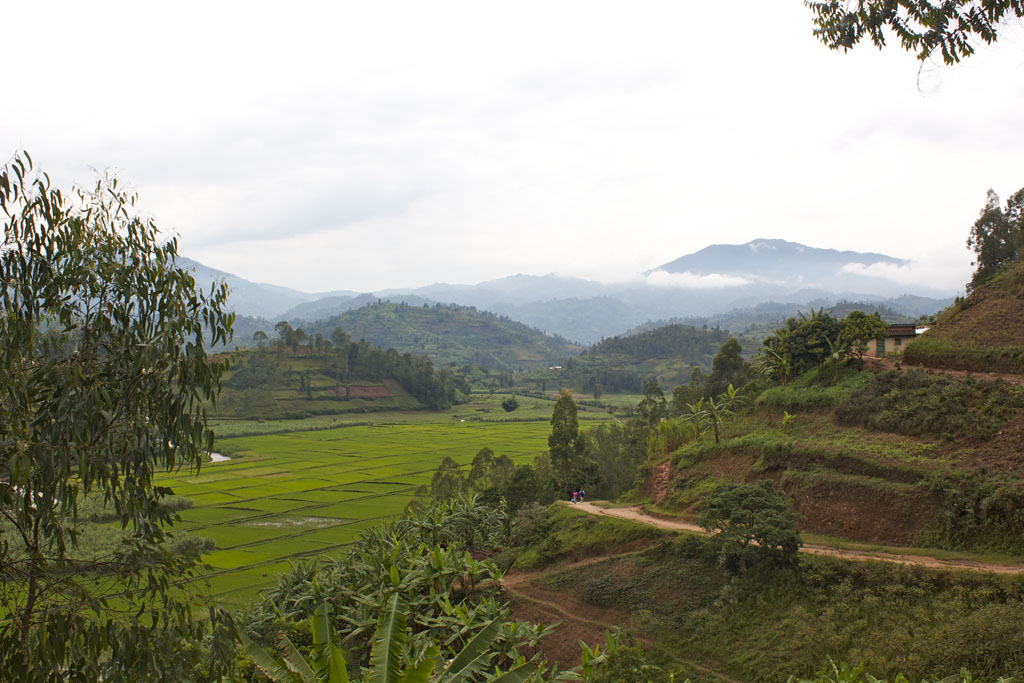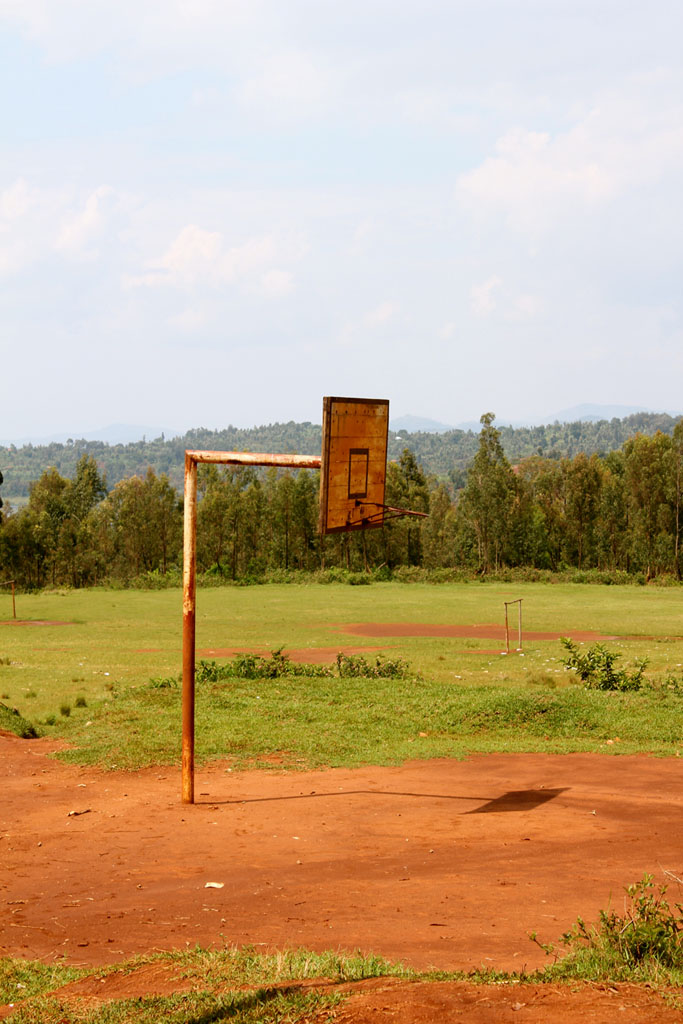Educator Tools

 Ask yourself:
Ask yourself:
- Are there any current conflicts where the international community is failing to intervene appropriately?
- When have the international communities intervened in conflicts in a positive way?
- What role should peacekeepers play in conflict situations? What situations merit our participation and is it ever appropriate for peacekeepers to use force?
- How can a period of collective mourning help Rwandan youth remember the past, especially considering that many of them were born after the genocide?
This really happened!
While, the ethnic divisions between the Hutus and Tutsi came to a head in April 1994, tensions had been mounting for years. The distinction between the two groups, the cattle-owning Tutsis and the pastoral Hutus was initially fluid as families, friends, and neighbours intermixed. However, with the arrival of the Belgian colonists and their new identity card system, the differences between the Tutsi minority and Hutu majority became more pronounced. When the Tutsis were put in control by the Belgian authorities, the Hutu majority began to resent their influence as well as the economic disparity between the two groups. In the years leading up to the 1994 genocide, the two ethnic groups struggled for control and extremist views rose to prominence.
On April 5, 1994, Rwandan President Juvénal Habyiarimana, Burundian President Cyprien Ntaryamira, and other dignitaries were flying from Dar es Salaam, Tanzania to Kigali, Rwanda. As they approached the Kigali airport, the plane came under heavy fire and crashed, killing everyone on board. The ethnic Hutu majority immediately accused the Tutsi minority of planning the attack and began a systematic slaughter of the Rwandan Tutsis that lasted 100 days. Official estimates place the death toll at approximately 800,000 as neighbour killed neighbour in unprecedented acts of violence led by Hutu militants, known as the Interhamwe.
ACTION 1
Do
The Meaning of Words & the Power of Rhetoric
Before and during the genocide, radio was the main means of communication. Throughout the country, Rwandans tuned into daily radio connecting people in remote rural environments to each other, and promoting the rise of ethnic hatred. On November 22, 1992, at a political party conference Léon Mugesera gave an inflammatory speech emphasizing the potential dangers posed by the rising Tutsi minority. He labeled the Tutsi as “inyenzi” meaning cockroaches, a name that became an integral part of the anti-Tutsi propaganda machine and radio broadcasts. Years later, the word “inyenzi” still has powerful connotations and is avoided by most Rwandans.
- Léon Mugesera fled the country shortly after his speech and lived in Quebec for several years until he was deported in 2012. Back in Rwanda, Mugesera was put on trial for inciting genocide and ethnic hatred. Imagine you were on the jury, what would you have to consider when deciding whether or not Mugesera’s speech makes him guilty? Compare your criteria with a partner; are they similar or different? The transcripts of these speeches are held at the Montreal Institute for Genocide and Human Rights Studies at Concordia University.
- Can you think of another historical situation where words or speeches have been accused of inciting violence or hatred? Use a T-chart or Venn diagram to determine the similarities and differences between these two situations.
On April 15, 2016, Léon Mugesera was given a life sentence for hate speech during the Rwandan genocide. Now age 64, the high court in Rwanda convicted him of genocide and crimes against humanity. He denied the accusations, saying he immigrated from Rwanda to Canada before the massacre in 1994.
“The court finds that Mugesera is guilty of … public incitement to commit genocide, persecution as crime against humanity and inciting ethnic-affiliated hatred,” Judge Antoine Muhima said.
ACTION 2
Do
The role of international observers: How can we work together as an international community?
According to investigative journalist Linda Melvern, “Rwanda’s violent divisions might have been easier to heal and its tragic history somewhat different had it not been for the involvement of outside interests.” As commander of the UN forces in Rwanda, Lieutenant General Roméo Dallaire repeatedly requested reinforcements from the New York headquarters. His requests were consistently denied; in fact, his mission was reduced in size during the genocide, in spite of the protocols laid out in the 1948 Geneva Convention.
A. With a partner, create a list of other situations where the international community has failed to intervene appropriately. Are there any present day conflicts that should be on the list? When has the international community intervened in a positive way?
B. Social media brings global communities together and facilitates a constant flow of information. In our rapidly shrinking world where information is available at our fingerprints, what social media tools (Facebook, Instagram, Twitter, etc.) can we put in place to ensure that human rights abuses don’t occur? Do you think that the events in Rwanda would have been different if they had been broadcast using social media? Compare this to the Arab Spring where social media was used extensively to highlight injustice and provide real-time updates.
Commemorative flowers for Rwandan genocide
Credit: endgenocide.org
ACTION 3
Do
Romeo Dallaire and Peacekeepers
Romeo Dallaire
Credit: Worldwide Streamer Speakers
Lieutenant General Roméo Dallaire is one of Canada’s most respected military leaders and human rights advocates. Before his retirement, he held several important military posts including the commander of the United Nations Assistance Mission for Rwanda (UNAMIR). This mission placed him in the middle of a brutal genocide and civil war that affected him profoundly. Upon returning to Canada, he “plunged into a disastrous mental heath spiral” and was subsequently diagnosed with post-traumatic stress disorder. In the introduction to his award-winning memoir, Shake Hands with the Devil: The Failure of Humanity in Rwanda, he wrote the following:
“It’s been nine years since I left Rwanda, but as I write this, the sounds, smells and colours come flooding back in digital clarity. It’s as if someone has sliced into my brain and grafted this horror called Rwanda frame by blood-soaked frame directly on my cortex. I could not forget even if I wanted to. For many of these years, I have yearned to return to Rwanda and disappear into the blue-green hills with my ghosts. A simple pilgrim seeking forgiveness and pardon. But as I slowly begin to piece my life back together, I know the time has come for me to make a more difficult pilgrimage: to travel back through all those terrible memories and retrieve my soul.”
– Dallaire, Shake Hands with the Devil, pp. 4-5
Lieutenant General Dallaire is not alone is his response to wartime atrocities. Soldiers returning from combat zones are often left with deep-seated psychological scars. Canadian soldiers have served overseas throughout the 20th and 21st centuries and for most of us at home their experiences are difficult to comprehend. It is important to recognize that the horrors of wartime have an impact on everyone involved, including the soldiers sent in as peacekeepers and international observers.
A. One of the reasons Lieutenant General Dallaire was so distraught by the events in Rwanda was that he was powerless to change the outcome. Debate the following:
- What role should peacekeepers play in conflict situations?
- What situations merit our participation and is it ever appropriate for peacekeepers to use force?
B. It is important to recognize the difficulty that many soldiers have when they return home from duty.
- What support do we offer our veterans and how can we make the transition easier for them?
- Do you think it is important to have systems in place to help them on their return?
C.One program that currently exists is Helmets to Hardhats Canada, which helps provide veterans with new skills and apprenticeship opportunities.
- What other programs could we put in place to help ease soldiers’ transition and address the challenges they might face?
ACTION 4
Do
How do we remember?
Even though Rwanda has changed dramatically in the years following the genocide, parts of the country still remain underdeveloped with high poverty rates. The Kigali Memorial Centre (KMC) contains the remains of over 250,000 genocide victims, as well as a detailed account of the 1994 events, personal artifacts, video testimony, and a children’s memorial. Unfortunately, not all Rwandans have access to the museum and its resources. KMC and its partner, Aegis Trust, are in the process of designing a mobile exhibit to travel around the country and educate the youth.
A. Considering artifacts
If you could contribute to the design of mobile exhibit, what types of personal artifacts or primary sources would you incorporate? Would you choose to use photographs, video testimony, and/or written accounts? Create a model of your display using pictures, drawings, and/or words. You can visit the Aegis Trust/Kigali Memorial Centre website to see what resources they have available and build off that.
B. Designing your own Rwandan exhibit
In most cases, Rwandans of both Hutu and Tutsi descent will be visiting the exhibit together. Even though the terms are no longer used, it is important to remember that everyone is bringing their personal histories and backgrounds with them. It is crucial to make sure that everyone feels safe and comfortable.
- What kind of activity could you do with a school group when they arrive at the exhibit?
- In a group, address these issues through drama, art, writing or oral story telling.
Most villages in Rwanda have memorial stones and mass graves dedicated to their genocide victims. In the years following the genocide, bodies were added to these mass graves as they were discovered. In some communities, they have chosen to keep the massacre sites intact to make a statement, as opposed to the customary interring of bodies. Every April, Rwandans gather as a community to remember the genocide victims. The commemoration period begins with a week of memorial services followed by a 100-day period of remembrance that includes changing the music they listen to and plastering the countryside grey, the colour symbolic of mourning in Rwandan culture.
Think
C. Why remember?
- Why is it imperative to commemorate past atrocities?
- How can a period of collective mourning help Rwandan youth remember the past, especially considering that many of them were born after the genocide?
- Are there other examples you can think of where groups come together to remember as a community?
Do
D. Reflecting on images
Choose one of the images of Rwanda below and write a caption, poem, or reflection that combines the theme of remembrance with the image. Then find a classmate who chose the same image and compare your responses.
ACTION 5
Think
Returning to Village Life: How do we work together to heal?
One of the aspects that made the Rwandan genocide unique was the fact that it truly was a case of neighbours, friends and family turning on each other and that a civil war took place alongside it. The Hutus and Tutsis were so interconnected and the level of involvement in the genocide was so pervasive that the aftermath presented a new set of challenges. In 100 days the estimated death toll was 800,000, which means that an average of 10,000 people were murdered each day. It also means that determining who committed individual crimes was incredibly challenging and that prosecuting everyone responsible would be a long, arduous process. While prominent political figures and leaders of the Interhamwe were sent to the UN Tribunal in Arusha, Tanzania, the traditional Gacaca court system was brought back to promote peace and reconciliation in village communities.
A. In many cases, Gacaca courts brought family members in direct contact with people accused of murdering their loved ones as they listened to their stories.
- While confessions on this scale can be difficult to comprehend, has there been a time in your life where you have had to confess something or listen to someone else’s confession?
- In your journal, describe how this made you feel. Is there anything you would do differently next time when confessing or when reacting to someone else’s confession?
B. The genocide also came hand-in-hand with a civil war that ravaged the country and created a refugee crisis throughout East Africa. After 1994, many Rwandans spent a long time away from their homes and/or in refugee camps.
- Imagine you were returning home after a long trip away, what would you be looking forward to?
- What types of things might have changed while you were away?
After the genocide — An Interview
My name is Carly and I recently returned from living in Rwanda for a year and a half. I spent a year in a rural village in the southwest training teachers and six months editing magazines in the capital, Kigali. I was overwhelmed by the beauty of the country and incredibly impressed by how much it changed and developed since the events of 1994. My family and friends were very interested in my experiences, especially since they associated the country with mass murder and political instability. I thought that I would take the opportunity to share my reflections here and answer some of the questions I have been asked about living in Rwanda.
How did you prepare yourself for a move to Rwanda? Were things different or the same as what you expected?
In 2006 I visited Ghana in West Africa and was absolutely blown away by the people I met and the places I visited. That trip opened a door for me and I have been volunteering and working in different parts of Africa ever since. Before moving to Rwanda I spent time in Uganda, which borders it to the north and has geographical and cultural similarities. This made Rwanda seem a bit familiar and made me want to visit it even more. I also read extensively on Rwanda’s history and the genocide, which gave me a basic understanding of the country before I moved there. When I got to Rwanda the organization I worked for held a two-week training program that addressed cultural and political issues. They explained how village life worked and gave general guidelines on how to address (or not address) the genocide in everyday situations. They advised us not to ask too many personal questions, but always to be ready to listen if someone wanted to share.
Even though I had spent time in Uganda, I was not prepared for how beautiful Rwanda is. The lush green rolling hills took my breath away and I immediately understood why the country is nicknamed “the land of a thousand hills” or “le pays des mille collines.” I was also surprised at how clean the country is, especially Kigali, where people sweep the streets every day! This was a huge change from the some other African cities I’d been to. I knew how much Rwanda had developed since 1994, but seeing in person was another thing. Sometimes I would forget what had taken place, but other times it was all too vivid as every village had their own bright purple memorials you would see by the roadside.
Do issues around the genocide come into daily life?
I think this depends on where you live in the country and what you’re doing. I lived in a village where most of the Tutsi population had been killed in 1994 and even though many Tutsi refugees returned after the genocide they usually moved to Kigali. We had a memorial and mass grave near the village church and memorial services were held there every April. Most people that I worked with didn’t speak about the genocide often or at all, but others would allude to the fact that their lives had changed and they had lost family members. They were always happy to hear that I was Canadian because the Canadian peacekeepers under Lieutenant General Dallaire were very highly thought of. Sometimes, I would look around and realize that I was in a place where people had been killed or taken refuge. I always wondered if the Rwandans around me were thinking about that as well, but I knew that it was insensitive to ask. Obviously, people who worked in fields directly related to the genocide, like trauma counseling or genocide prevention, would have different answers.
Did you hear any personal accounts?
While I knew not to ask what my neighbours and colleagues experienced, some did tell me on their own accord. One day I got a ride from someone working on the roads in my village and, unexpectedly, he told me what happened to his family. As a young boy he lost his father and most of his siblings to Interhamwe (Hutu militants). For him, every day was still a struggle and he was very aware of the challenges posed by living in a post-genocide society. I heard several other stories second hand or as part of an explanation for why an individual was an orphan or why the education system needed to develop.
Were you ever worried or concerned for your own safety?
In general, Rwandans treat their visitors with respect and hospitality. The people I met in my jobs and in both places I lived were incredibly warm and genuinely excited to have me there. On a day-to-day basis, the issue of safety did not cross my mind. I would walk home alone at night without worry, something that I don’t often do in Toronto. Even though ethnic tensions still do exist I never felt threatened by them or fearful that another genocide would erupt. Sometimes when I took public transportation in rural areas, I would look around and wonder what the people sitting next to me had done in 1994. However, as the country placed such an emphasis on moving forward, I felt it was important for me to respect that and follow their lead. The only time I was ever worried about safety was when tensions escalated on the border with the Democratic Republic of the Congo, however, that was an external, not internal situation.
Have you visited the Kigali Genocide Memorial Centre? How did that make you feel?
I visited the genocide museum on several occasions and in fact, by the end of my time there I was a regular and knew many of the staff. I was impressed by the amount of information in the museum, all presented in Kinyarwanda, English, and French. The museum is also filled with personal artifacts and video testimonies that can be difficult to watch, but help understand what people went through. Everyone reacts to the exhibits in their own way and most are overwhelmed by the stories in front of them. For me, the experience was one of profound sadness and I appreciated the care and thought that went into preserving the memories of those who died. In addition to the museum’s genocide exhibit, there is also a very touching children’s memorial, as well as an exhibit upstairs on other genocides around the world. There are also memorial gardens and mass graves outside where it is customary to leave flowers. The fact that the remains of victims were onsite made it very different from the Holocaust museums that I visited in Washington, D.C. and in Israel.
Permissions: Carly Bardikoff
Recommended Resources
Teaching Resources on the Rwandan Genocide
Outreach Programme on the 1994 Genocide Against the Tutsi in Rwanda and the United Nations
Every effort has been made to gain permission from copyright holders to reproduce borrowed material. The publishers apologize for any errors and will be pleased to rectify them in subsequent reprints and website programming.
Educator Tools


